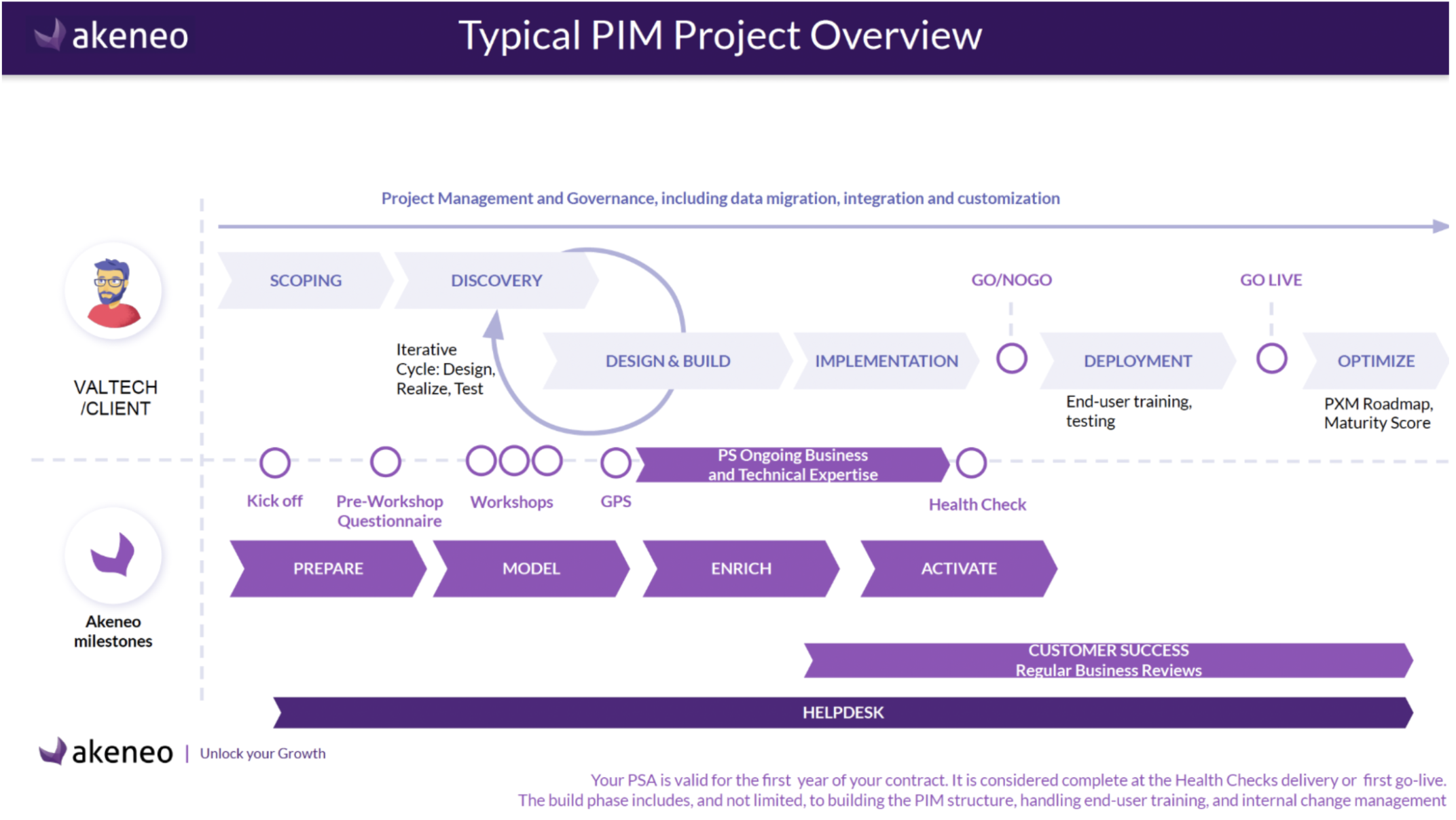Are you ready to ensure a seamless go-live for your new PIM system? Discover how to master your PIM implementation process as trusted Akeneo partner Valtech delves into the critical steps required for a successful PIM go-live and, and how to ensure your project's long-term success!

Table of Contents
Keywords
As you build out your PIM and create a foundation of product information, you should be able to build a proper rollout strategy, create a release plan that would cover the different steps involved before, during, and after go-live, and plan a dry-run of the implementation when possible.
Go-live is not only a technical process, but you also need to account for other aspects (governance, business, user, …) to make sure that you have a smooth integration.
But before your go-live process kicks off, it’s important to ensure that you complete these first two steps:
Before implementing any new technology, but especially a PIM, it’s important to run an audit on the current environment of your technology stack and your product data.
Luckily, Akeneo can help you with this; once you get into a project with your Partner integrator, you might sign up for Project Success Assistance (PSA). This program will then walk you through a comprehensive health check during the project to ensure everything is in order ahead of your go-live.

Akeneo, along with the partner, conducts a Functional and Technical system review at the end of each project, before a client’s go-live, to validate the solution and identify opportunities for improvement.
As you finish your go-live preparation, you should make sure to complete user acceptance criteria. This is critical to make sure your project is completed and fulfills your requirements with the people who will actually be using the technology day in and day out.
This can be seen as the last step to ensure the adoption process goes smoothly as doing different user tests will help your team identify any misunderstandings or inefficiencies through feedback provided from these UAT sessions.
One of the most important aspects of your PIM release plan is that you should have only one for the PIM and it should cover the different dependencies in the document. For example, a common use case would be to have some steps outlined around the ERP or eCommerce integration in the PIM release plan.
Additionally, you’ll need to make sure that all participants are aware of this documentation and understand it in its entirety.
Ideally, the release plan can be split into three main sections: Pre Go-live, Go-live, and Post go-live. In each section, you should cover the different milestones, steps, or actions required, and how you’ll measure success through certain metrics or gates. It’s also important to cover governance, business, and technical aspects in the document.
If you focus only on the technical part of the release, you will miss steps like governance signoff, communication to users to stop using an existing tool, and even more which could derail your go live.
Another important aspect of the release plan should be the rollout strategy. Within the rollout plan, you should have a critical milestone (final data import, platform integration, …) and a potential rollback plan, if needed. Sometimes, moving forward is the best scenario but it is often worth it to have some options on the table if things go south.
Dry run: a rehearsal of a performance or procedure before the real one. We do it for many other aspects of our work: presentations, certification, demo; and you should do it for your go-live.
It might not always be possible to do a practice run, but it’s worth it to at least give it a shot and go through the full plan. A dry run will help to complete the release plan and gain confidence around the Go-live. It often helps to identify missing steps, to reorder some steps, and to calculate (approximately) how much time implementation will realistically take.
Now, you should be ready to start your go-live. Again, make sure to follow the release plan that you built, tested, and validated during your project and communicate throughout the Go-live.
For additional support and confidence, create a dedicated support team for the launch, typically made up of the people who have been working with the project implementation this whole time.
Once you have done the launch, it may feel like the bulk of the project is done, but it’s really only getting started.
After the go-live, conduct a post-mortem review to assess and gather feedback from users and internal teams about what went well and what could be improved ahead of the next release. Adjustment, improvements, lessons learned… all of these are crucial to ensuring that future projects run even smoother.
Do you think once the PIM is implemented, your job as a partner will stop? Do you think your client wishes to be on his own after all this time?
Well, let me tell you that some won’t ask for support, some will build the support internally, and some will ask for support from Valtech. So, to answer this need, the team here at Valtech have built an entire support system which covers:
Looking for more PIM implementation support? Check out some of our other Valtech featured articles diving into how to design your PXM program for success, the people-first approach to product experiences, how to maximize the ROI of your PXM organization, or the steps to perfecting your PIM selection process.
This article is a guest post by Akeneo partner, Valtech.